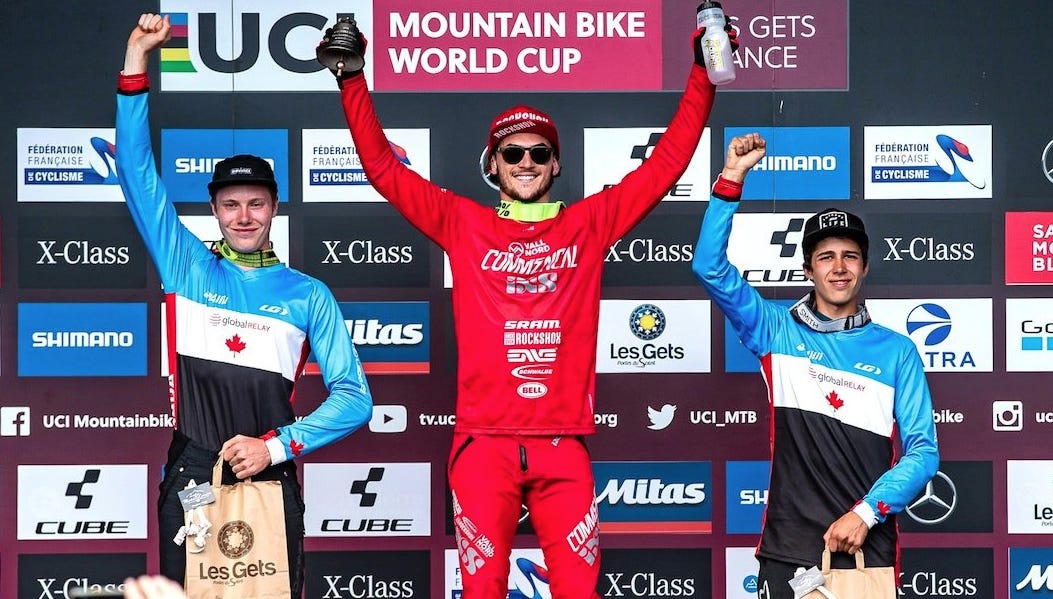Inclusion through Exclusion
The logic and ethics of protected sporting categories.
Imagine a world without any sporting categories at all, a world where every competitor in a given sport — young and old, male and female, big and small, able-bodied and disabled — all competed head to head in one big competition.
Who do you think would end up winning?
I don’t even need to specify the sport to make my guess. I’d be willing to bet money that the top spot would be taken by an able-bodied young man. In fact, I bet you the entire podium would be filled with able-bodied young men. You’d probably have to work your way pretty far down the list of finishers before you’d find a single competitor who wasn’t an able-bodied young man.
In a world like this, without categories in sporting competitions, what type of people do you think would put time and effort into training, honing their skills, and developing sporting excellence in order to take home a gold medal?
There’s certainly no point in trying to win if you’re long past your athletic prime, that’s for sure — the young blood would surely beat you.1 If you’re disabled then you’re at a disadvantage competing against athletes who have all of their limbs, a full range of motion, and no co-ordination impairments. And if you’re female? Even if you’re young and able-bodied, you might as well stay home. Nothing you do short of doping with testosterone will bring you close to being competitive with the best male athletes.234
So how did we move from a world like this, which is how sports competitions were organized for decades,567 to one that’s more inclusive? How did we create opportunities for older athletes, for female athletes, and for athletes with disabilities to compete and to win competitions?
We created protected sporting categories. Protected categories are an inclusive measure that create equal opportunities for athletes that are disadvantaged by some physiological trait, be it age, sex, or disability status.
Notice that protected categories are necessarily exclusive. By defining the subset of athletes who are allowed to participate in a category, you implicitly define a subset of athletes who cannot.8

This is where use of the words “inclusion” and “exclusion” often trip people up. We include athletes with physiological disadvantages by creating categories that exclude their advantaged counterparts. Think about it: the Paralympics wouldn’t be a meaningful way of giving disabled athletes competitive opportunities if any able-bodied person could compete in them. To include disabled people, you need to create categories that exclude able-bodied people.
This is why, when you argue for the inclusion of advantaged classes athletes in protected categories, you are actually arguing to dismantle inclusive measures created for their disadvantaged counterparts.
The protected female category is an inclusive measure.
People who argue for the inclusion of gender-diverse male athletes in the protected female category often mean well, and think they are arguing for increased inclusion. The word inclusion is right there in the sentence, right? So how could they not be?
Unfortunately, because they don’t understand how protected categories work, or the current state of scientific knowledge around the permanence of male advantage, they are in fact arguing against an inclusive measure that was created to provide half of the world’s population with equal competitive opportunities.
Hopefully, this article has helped clear up some of the confusion. If more people understood the logic and ethics of protected sporting categories, and how we achieve inclusion through exclusion, then perhaps we could spend our time considering ways to make sports more welcoming to athletes from all walks of life instead of fighting to defend the integrity of female sports.
Ganse, Bergita, and Hans Degens. “Current Insights in the Age-Related Decline in Sports Performance of the Older Athlete.” International Journal of Sports Medicine, vol. 42, no. 10, 17 May 2021, pp. 879–888, https://doi.org/10.1055/a-1480-7730.
Thibault, Valérie, et al. “Women and Men in Sport Performance: The Gender Gap Has Not Evolved since 1983.” Journal of Sports Science & Medicine, vol. 9, no. 2, 2010, pp. 214–223, pubmed.ncbi.nlm.nih.gov/24149688/.
Jobe, Tyler K., et al. “Sex Differences in Performance and Depth of Field in the United States Olympic Trials.” Journal of Strength and Conditioning Research, vol. 36, no. 11, 1 June 2022, pp. 3122–3129, https://doi.org/10.1519/jsc.0000000000004295.
Millard-Stafford, Mindy, et al. “Nature versus Nurture: Have Performance Gaps between Men and Women Reached an Asymptote?” International Journal of Sports Physiology and Performance, vol. 13, no. 4, Apr. 2018, pp. 530–535, https://doi.org/10.1123/ijspp.2017-0866.
“THE HISTORY of MASTERS/VETERAN ATHLETICS (ABBREVIATED) .” World Masters Athletics, world-masters-athletics.org/world-masters-athletics/. Accessed 16 Sept. 2023. https://archive.ph/c4spy.
“History of the Paralympic Movement” International Paralympic Committee, 2018, www.paralympic.org/ipc/history. Accessed 16 Sept. 2023. https://archive.ph/v85Go.
“Women’s History: Sports.” Britannica Presents 100 Women Trailblazers, Encyclopedia Britannica, www.britannica.com/explore/100women/know-the-history/womens-history-sports. https://archive.ph/5SxFe.
In set theory, this is called the compliment.

